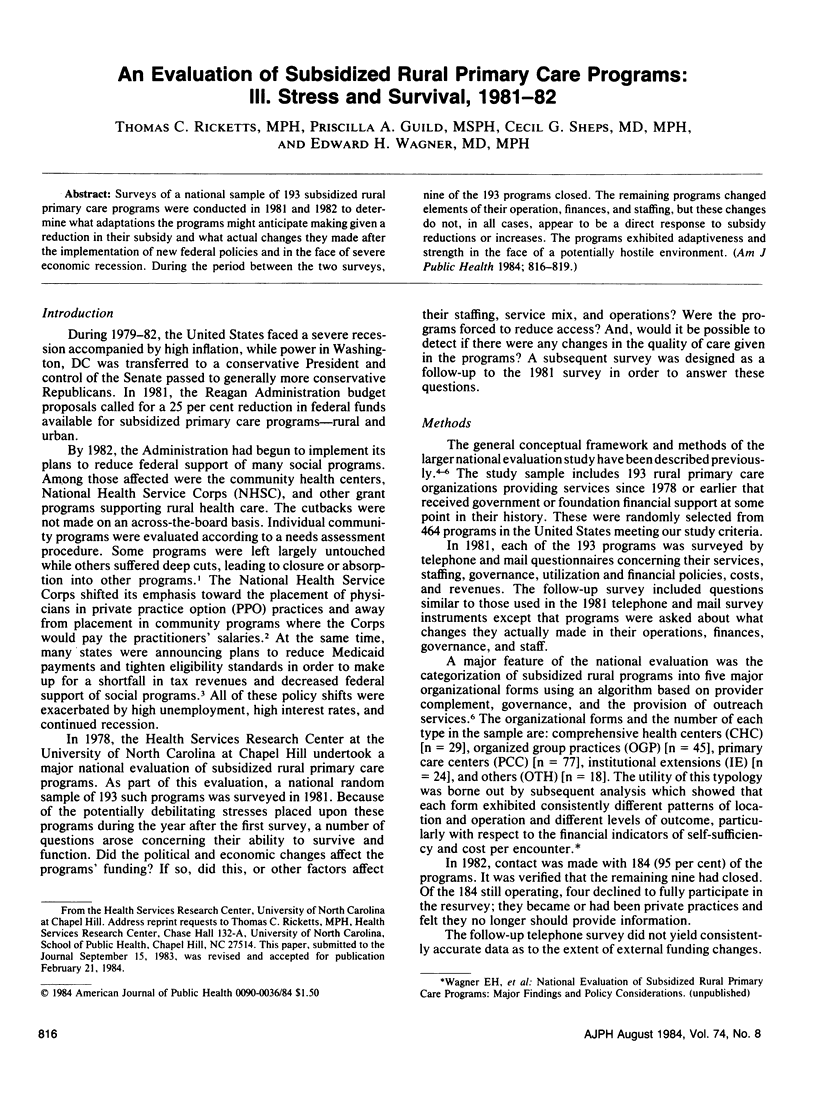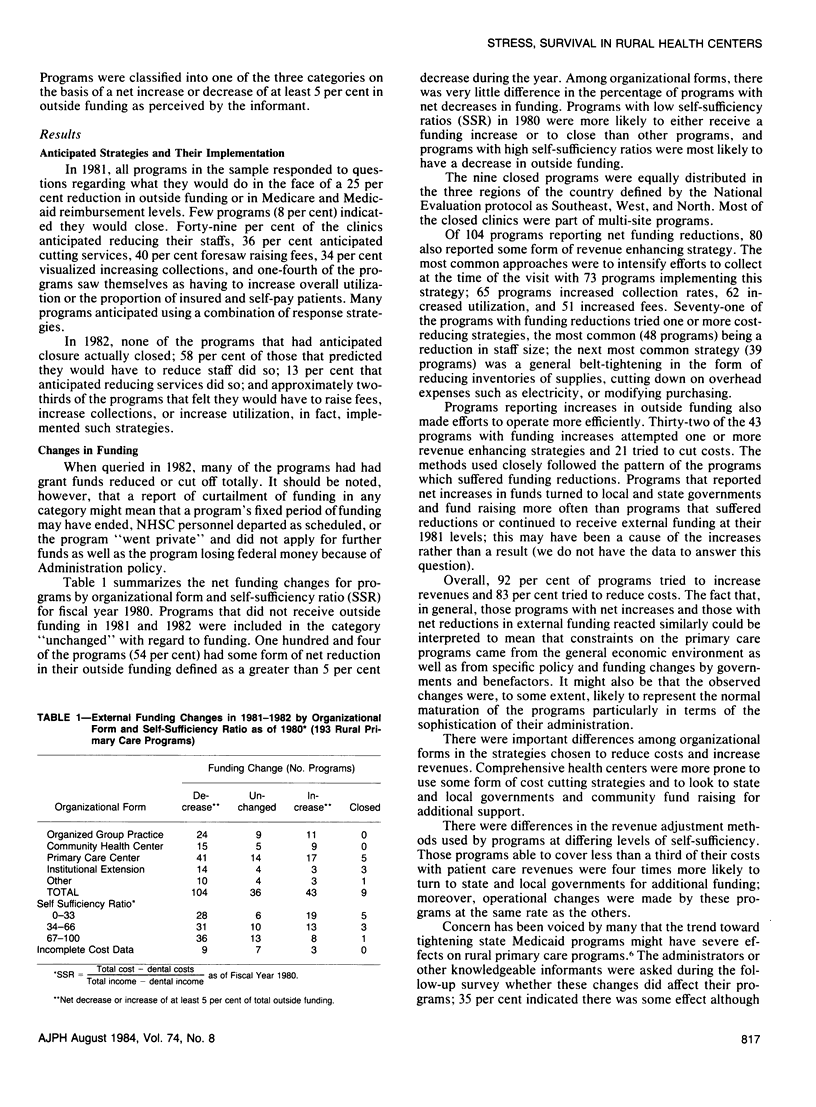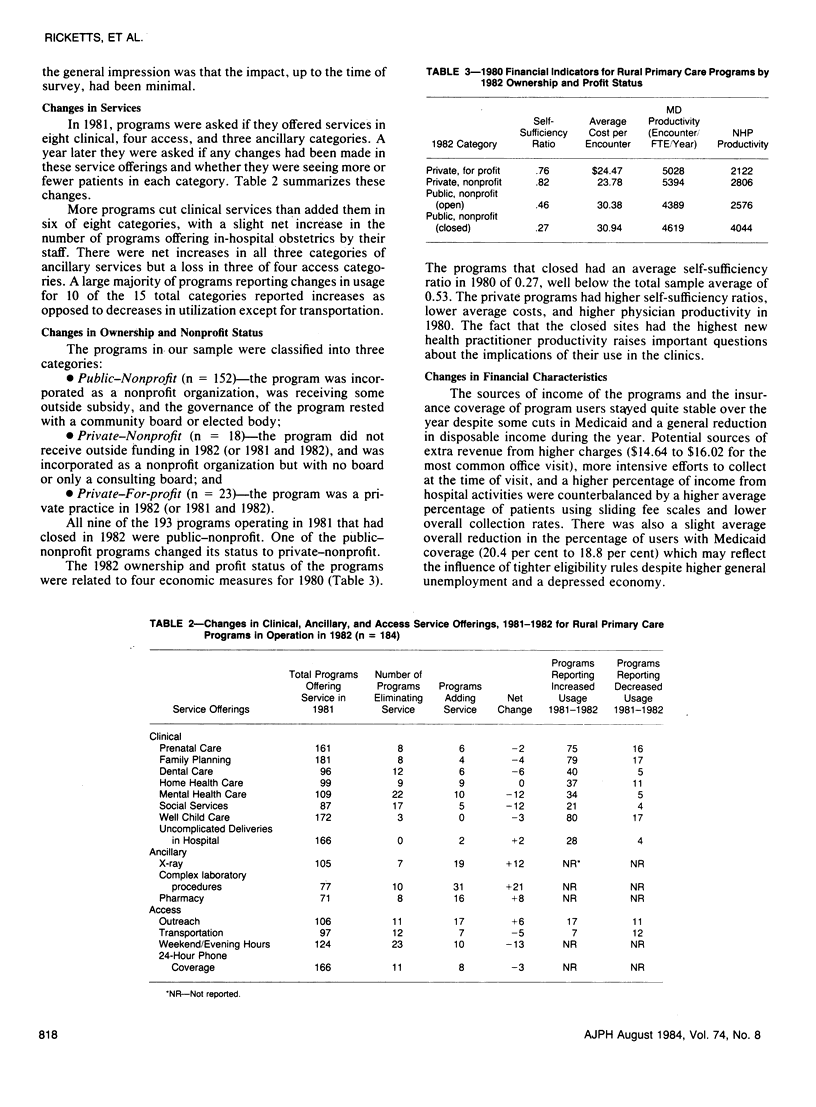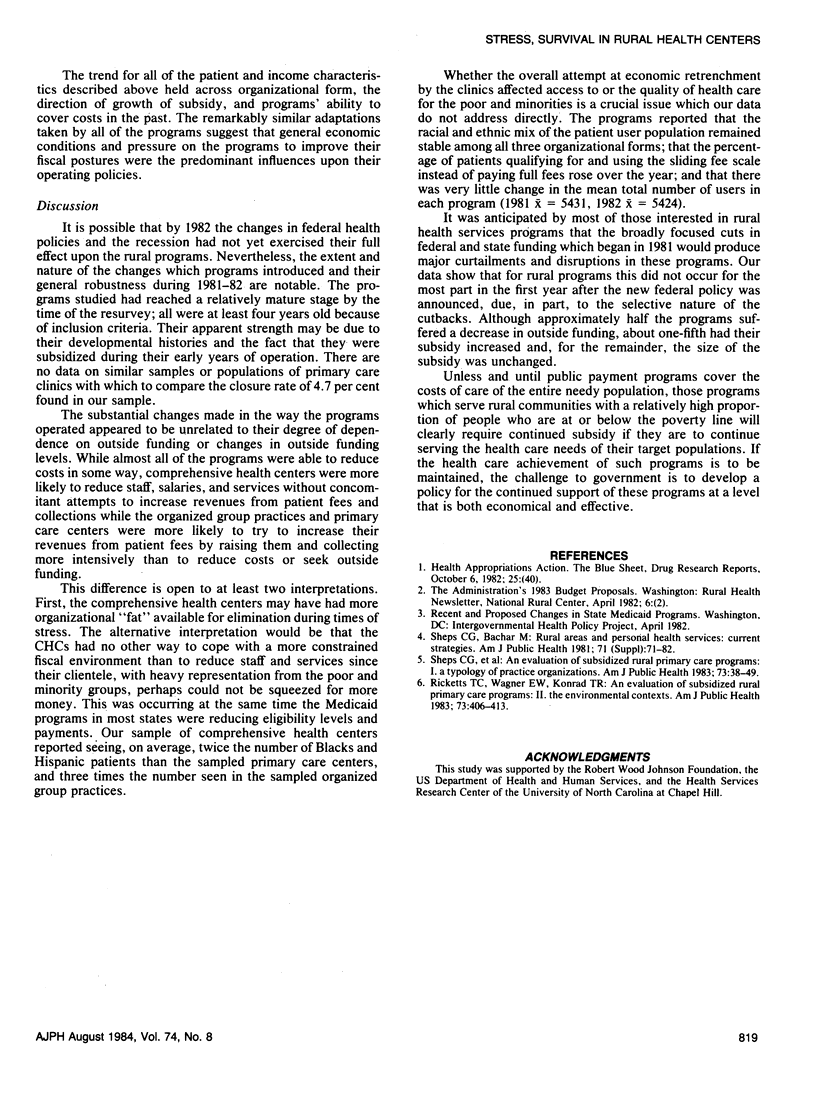Abstract
Surveys of a national sample of 193 subsidized rural primary care programs were conducted in 1981 and 1982 to determine what adaptations the programs might anticipate making given a reduction in their subsidy and what actual changes they made after the implementation of new federal policies and in the face of severe economic recession. During the period between the two surveys, nine of the 193 programs closed. The remaining programs changed elements of their operation, finances, and staffing, but these changes do not, in all cases, appear to be a direct response to subsidy reductions or increases. The programs exhibited adaptiveness and strength in the face of a potentially hostile environment.
Full text
PDF



Selected References
These references are in PubMed. This may not be the complete list of references from this article.
- Ricketts T. C., Konrad T. R., Wagner E. H. An evaluation of subsidized rural primary care programs: II. The environmental contexts. Am J Public Health. 1983 Apr;73(4):406–413. doi: 10.2105/ajph.73.4.406. [DOI] [PMC free article] [PubMed] [Google Scholar]
- Sheps C. G., Bachar M. Rural areas and personal health services: current strategies. Am J Public Health. 1981 Jan;71(1 Suppl):71–82. doi: 10.2105/ajph.71.1_suppl.71. [DOI] [PMC free article] [PubMed] [Google Scholar]
- Sheps C. G., Wagner E. H., Schonfeld W. H., DeFriese G. H., Bachar M., Brooks E. F., Gillings D. B., Guild P. A., Konrad T. R., McLaughlin C. P. An evaluation of subsidized rural primary care programs: I. A typology of practice organizations. Am J Public Health. 1983 Jan;73(1):38–49. doi: 10.2105/ajph.73.1.38. [DOI] [PMC free article] [PubMed] [Google Scholar]


